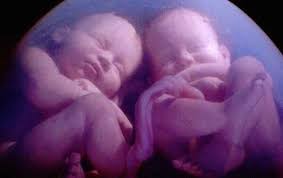What to Expect with Multiple Pregnancy: Risks, Symptoms, and Care Guidelines
Multiple pregnancy is the occurrence of more than one baby at a time. It can be achieved naturally or through fertility treatments, such as in vitro fertilization (IVF). Multiple pregnancies are much more common today than they have ever been before due to advances in reproductive technology and an increase in fertility treatments. The rate of multiple births has steadily increased since the late 1980s and now accounts for nearly 3% of all live births in the United States. While multiple pregnancies are often associated with joy, they can also bring higher risks than those associated with singleton pregnancies, including an increased chance of preterm labor and delivery, gestational diabetes, preeclampsia, and postpartum hemorrhage. Additionally, mothers carrying multiples may experience intense fatigue and discomfort throughout their pregnancy due to carrying extra weight and hormones that cause more rapid growth of their babies. Despite these risks, many women carrying multiples are able to have successful pregnancies and deliver healthy babies. Please keep reading for details on the following topics:
Causes of a multiple pregnancy
Complications of a multiple pregnancy
Self care management for a woman with a multiple pregnancy

The two most common types of multiple pregnancies are:
-
Twins: The most common form of multiple pregnancy, involving two fetuses. Twins can be:
- Identical (monozygotic): Occurs when a single fertilized egg splits into two embryos. They share the same placenta and are of the same sex.
- Fraternal (dizygotic): Occurs when two separate eggs are fertilized by two separate sperm. They have separate placentas and may or may not be the same sex.
-
Higher-order multiples: This includes triplets, quadruplets, or more. Higher-order multiples are less common and carry higher risks for both the mother and babies.
CAUSES OF A MULTIPLE PREGNANCY
Use of fertility treatments
In vitro fertilization- several fertilized eggs are inserted in the uterus at the same time
Age 35 or older
African descent
History of having multiple pregnancy before
Family history of multiple pregnancy
COMPLICATIONS OF A MULTIPLE PREGNANCY
It is important to know when to seek urgent medical care, as delaying appropriate treatment can lead to further health complications. If you experience any of the following symptoms, you should seek medical help immediately. If you have any doubts about whether you should seek medical care, it is always better to err on the side of caution and consult with your doctor.
High blood pressure (preeclampsia)
Diabetes in pregnancy (gestational diabetes)
Delivery of the babies too early (preterm birth)
Fetal death (miscarriage or stillbirth)
Birth defects
Problems with the placenta, (placenta abruptio or placenta previa)
Low blood count (Anemia)
Too much amniotic fluid in the uterus (polyhydramnios)
Urinary tract infection (UTI)
Heavy blood loss after delivery (postpartum hemorrhage)
SELF CARE MANAGEMENT FOR A WOMAN WITH MULTIPLE PREGNANCY

Eating a balanced diet containing enough nutrients
Avoiding alcohol, cigarettes and caffeine
Avoiding physically demanding exercise
Getting plenty of rest
Accepting help from friends and family
Disclaimer: The information provided in this content is for general informational purposes only. It is not intended as medical or healthcare advice, diagnosis, or treatment. Always seek the advice of a qualified healthcare professional with any questions you may have regarding a medical condition or healthcare decisions.

